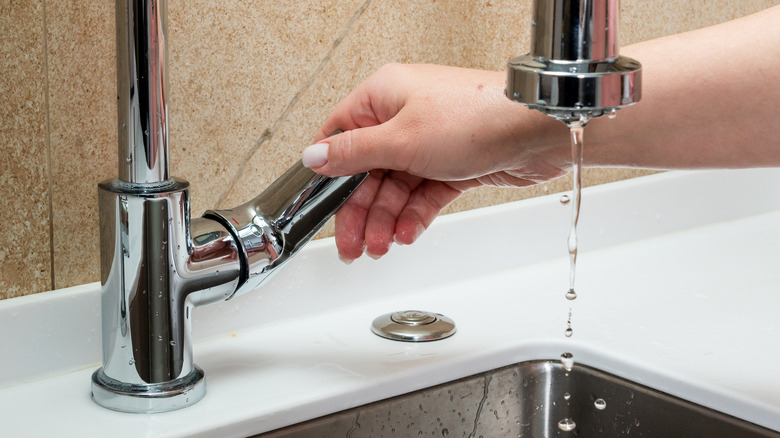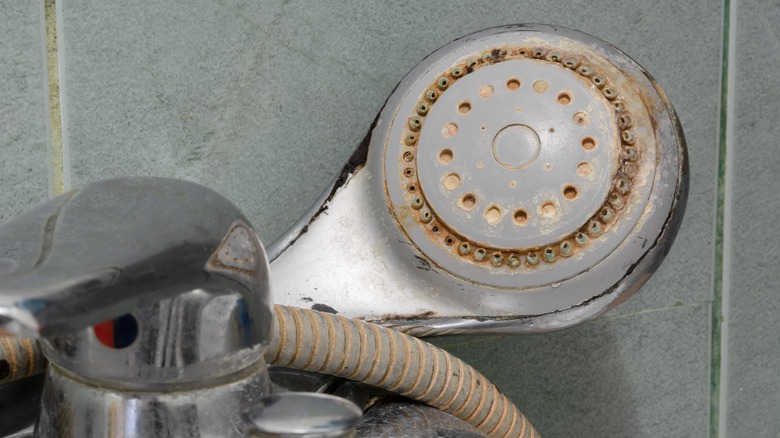Before You Call The Plumber, Try These Solutions For Slow Hot Water Issues
Are you finding yourself waiting in frustration for hot water, as gallons of the cold stuff flow down the drain? Whether the issue occurs in the kitchen, bathroom, powder rooms, or elsewhere in your house, it's an irritating one for sure. Not only do you waste precious time waiting for the heated water to make its way to the faucet, you also waste (equally precious) cold water in the process. But if your frustration has pushed you to the brink and you're ready to dial a local plumber — stop. Although a plumbing company will be overjoyed to have your business, it's possible to save money and try a few simple, DIY solutions first. There's a good chance that you may tackle the root cause behind the slow hot water flow without calling the pros.
There are several common root causes that leave you waiting at the faucet. A faulty hot water valve is a possible source of your troubles, as is a broken faucet or showerhead, or a leaky pipe. If you live in a hard water area (particularly the central part of the U.S., just east of the Rockies), it's possible that mineral deposits have built up in the pipes or the water heater. All of the issues above may be resolved in a DIY manner, as long as you don't mind getting a bit wet and dirty in the process. On the other hand, poorly sized heaters or pipes, corrosion in the pipework, and a water heater in need of replacement are best left in the hands of a plumber. Below, we'll walk you through the solutions you could handle on your own.
Ways to fix common issues that slow hot water flow
Is the hot water slow to appear at a single outlet? If you wait long at the shower but the kitchen faucet heats up quickly, the showerhead could be clogged — and vice versa. Seeing stains, or a white film around the fixture in question is an indicator that hard water is to blame. In this case, isolate the fixture by turning off the water valve, detach the showerhead or faucet, and immerse it in a solution comprising equal parts vinegar and water. After six hours, rinse the fixture, reattach it, and run water for half-an-hour — if the hot water runs quickly, you've resolved the problem. If the hot water still takes longer than normal, replace the fixture with a new one.
Hard water deposits affect every part of the water distribution network. If you have an old plumbing system, the hot water pressure is consistently low, and you live in a region with high levels of minerals in the water, chances are that debris has built up throughout the pipework. If you're seeing tell-tale signs of limescale, such as white stains in the sink, tub, or the fixtures, it's time to flush the water heater and the pipework. First, turn off and drain the water heater. Then fill the system with about 2 gallons of white vinegar, turn the heater on, and let the acidic substance do its job. After six to seven hours, run all the faucets and showers in the house until the smell of vinegar disappears. If deposits are not the issue, check the hot water isolation valve at the fixture where hot water takes long to arrive. These valves are usually located beneath or behind the outlets they serve. If the valve is not open fully, carefully open it by turning it counterclockwise. Hopefully, this step speeds up the hot water circulation.

